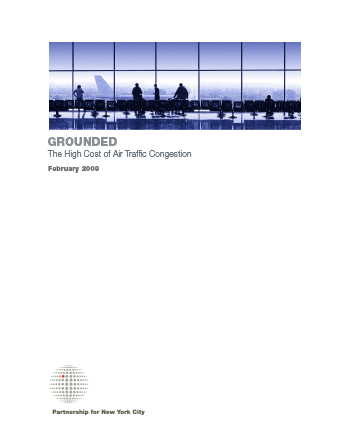Overview
The future of the New York metropolitan region as a center of global commerce, finance and innovation requires an air transportation system that is efficient and universally accessible. In 2008, New York’s three major regional airports served about 107 million passengers, including 32 million business travelers. To accommodate continued economic growth in the region, these numbers will need to increase in the years ahead. Unfortunately JFK, LaGuardia and Newark Liberty airports are already over-utilized and suffering from severe conditions of air traffic congestion.
The Partnership for New York City undertook this study in order to establish the full economic costs of air traffic congestion at the three major airports serving the New York metropolitan region with the intent of generating citizen awareness and government action focused on upgrading the aviation system in this region and across the nation.
$50B
The total value of lost time to the traveling public due to flight delays caused by air traffic congestion is projected to total over $50 billion from 2008 to 2025.
$16B
New York businesses will lose over $16 billion through 2025 due to congestion.
Report Highlights
The cost burden resulting from inefficient and unpredictable passenger and air freight service due to congestion is borne by passengers, shippers, and the regional economy, among others
Passengers
Passenger time loss represents the single most significant economic effect of congestion.
Shippers
Based on projected congestion increases, the cumulative impact of regional airport congestion on shippers will be $4 billion through 2025.
Regional Economy
New York businesses will lose over $16 billion through 2025 due to congestion, a cost borne even by those that do not use the system itself.
Key Takeaways
The findings of the study clearly show that investing in expanding regional airport capacity and upgrading the air traffic control system is more than justified by the cost burdens resulting from inefficient and unpredictable passenger and air freight service due to congestion. Moreover, the opportunity to correct these conditions is now — when the federal government is poised to invest in long-neglected infrastructure as a means of stimulating recovery from the global recession.
